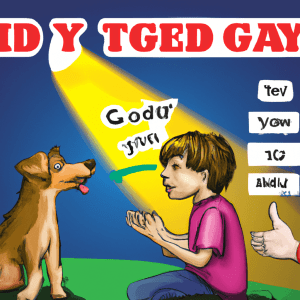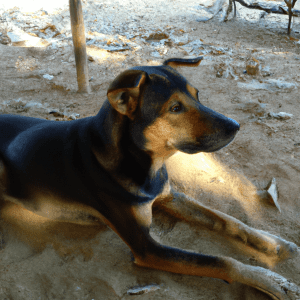Do dogs have lips
This is a question that often gets asked by people who are either new to owning a dog or simply curious. Dogs do have lips, although they are not very visible. Dogs use their lips and mouths to communicate, sense their environment, and even express their emotions.
From the way they lick their owners to the way they curl their lips when they are angry, dogs use their lips for a variety of purposes. In this article, we will discuss the anatomy of a dog’s lips, how they can help you better understand your dog, and some tips on how to properly care for them.
Do Dogs Have Lips? Answering the Puzzling Question
Yes, dogs do have lips! We all know those big, wet, slobbery kisses our pups give us, but is that actually coming from their lips? The answer is yes! Dogs have two sets of lips. The first set is the tissue that surrounds their mouths, which is called the labial mucosa.
This tissue is moist and helps to keep the mouth lubricated, which is why dogs’ mouths often feel wet when they lick us. The second set of lips is the actual lips, which are made of skin tissue. This tissue is lined with hair follicles and is slightly darker in color than the labial mucosa surrounding their mouths.
The actual lips provide extra protection for the teeth and gums, as well as help keep food and water in their mouths. It’s also worth noting that dogs’ lips are very sensitive. In fact, they can sense the slightest changes in temperature and texture, which is why they’re so adept at picking up on our emotions. So there you have it – dogs do have lips! Not only do they help protect and lubricate the mouth, but they also allow our furry friends to sense and show emotion.
Exploring the Anatomy of a Dog’s Lips
A dog’s lips may be small and often overlooked, but they play an important role in how your pup looks, eats, and communicates. Let’s take a closer look at the anatomy of a dog’s lips and learn more about their importance.
First off, a dog’s lips are made up of several layers of skin and muscle. This muscle helps them move their lips for facial expressions, and the skin helps keep the area moist and protected.
The top and bottom lips meet in the center of the muzzle and are usually the same color as the dog’s fur. The lips have several important functions. For one, they help keep food and water in the mouth while the dog is eating.
They also help keep food and water out of the dog’s eyes and nose, as well as help keep the mouth clean. The lips also help a dog to make facial expressions, like a smile or a frown. The lips also contain several glands that help keep the mouth moist and help protect the area from infection.
The salivary glands are responsible for producing saliva, which helps to keep the mouth clean and moist. The sebaceous glands produce an oily substance that helps to keep the area moisturized and protected.
Finally, the lips also contain several nerve endings, which help the dog sense and respond to different tastes, textures, and temperatures in their food. This helps the dog determine what tastes and textures they like, as well as what temperatures are comfortable for them to eat.
As you can see, the lips of a dog are an important part of its anatomy. They help to keep food and water in the mouth and out of the eyes and nose, help the dog make facial expressions, and provide sensory feedback so that the dog can determine what tastes and textures they like. So take a moment to appreciate your pup’s lips the next time you give them a smooch!
The Difference Between a Dog’s Lips and Human Lips
A dog’s lips and human lips may look a bit similar, but there are actually quite a few differences between them. For starters, a dog’s lips are much thicker and tougher than a human’s. This is because a dog’s lips are designed to help them pick up and carry food, as well as help them keep food in their mouth while they chew.
On the other hand, human lips are much thinner and more delicate. This is because human lips are designed to help us express emotions through facial expressions, as well as aid in speaking and other functions.
Another difference between a dog’s lips and human lips is that a dog’s lips are usually much darker in color. This is because a dog’s lips contain more melanin, which is a pigment that gives their lips their distinctive dark color.
Human lips, on the other hand, are typically much lighter in color and contain less melanin. Finally, a dog’s lips are much more sensitive than a human’s. This is because a dog’s lips contain a lot of nerve endings, which allow them to feel and detect subtle changes in temperature, texture, and taste.
Human lips, on the other hand, are not as sensitive, since they contain fewer nerve endings. So there you have it – the differences between a dog’s lips and human lips. Although they may look similar, they serve very different purposes and have some very distinct differences.
The Purpose and Function of Dog Lips
Dogs have lips for a variety of important purposes, from eating and drinking to communicating and even protection. Let’s take a closer look at why our furry friends have lips! One of the main reasons dogs have lips is to help them eat and drink.
When your pup takes a bite of food, its lips act as a barrier, keeping the food in its mouth instead of it falling out. They also help keep food and water from spilling onto their fur. Another purpose of dog lips is communication.
Dogs use their lips to convey a wide range of emotions and states of mind. For example, they might curl their lips back in a snarl when they’re feeling threatened or scared. Or, they might pull their lips tight against their teeth in a sign of submission or obedience.
Finally, dog lips can also act as a protective barrier. When a dog feels threatened, it will often purse its lips tightly together to help keep out anything that might pose a danger. This could be anything from dirt and debris to saliva or even people!
So, there you have it – dog lips are incredibly important for a variety of reasons! From eating and drinking to communication and protection, our furry friends rely on their lips for a range of different purposes.
What Types of Dogs Have the Most Prominent Lips?
Pugs and bulldogs are probably the most well-known breeds when it comes to prominent lips. Both have their signature underbite, which is characterized by the lower jaw protruding out farther than the upper jaw.
The excess skin on their faces creates the appearance of extra-prominent lips. Other breeds with prominent lips include Boxers, Shar-Peis, St. Bernards, and Neapolitan Mastiffs. Each of these breeds has a unique combination of facial features that create the look of fuller lips.
For example, some of these breeds have wrinkles that are particularly exaggerated around the area of the mouth, giving the appearance of defined lips. Finally, some designer breeds, such as Puggle (Pug/Beagle mix) and Bullboxer (Bulldog/Boxer mix), often feature prominent lips as a result of their unique mix of parent breeds. No matter the breed, these pups with their prominent lips are sure to steal your heart!
How to Keep Your Dog’s Lips Healthy and Clean
Keeping your dog’s lips healthy and clean is important for their overall health and well-being. Here are some tips to help you out:
- Brush your dog’s teeth regularly. This helps prevent plaque buildup, which can cause gum disease and other oral health issues.
- Give your dog dental chews or treats. These can help remove tartar buildup from their teeth and help keep their breath fresh.
- Offer your pup a dental toy. These toys are specifically designed to help clean your pup’s teeth and gums.
- Make sure your pup gets regular dental exams. This helps to identify any potential problems in the early stages and get them treated quickly.
- Feed your pup a healthy diet. Avoiding processed foods and sugary treats can help keep your pup’s mouth healthy.
- Clean your pup’s lips with a damp cloth or cotton swab. This will help remove any dirt, bacteria, and food particles that can get stuck in the corners of their mouth. By following these tips, you can help ensure that your pup’s lips remain healthy and clean.
What Does It Mean When a Dog Licks Its Lips?
When a dog licks its lips, it can mean a few different things. First, it could mean that the pup is hungry and looking for a snack. Dogs can also lick their lips when they’re feeling anxious or stressed.
This is a sign that they’re feeling uncomfortable in their current situation. Finally, it could simply mean that the pup is trying to show affection or is looking for attention. No matter the reason, it’s important to take note of when your pup is licking its lips and try to identify the cause.
The Amazing Adaptability of Dog Lips: How They Evolved Over Time
Dogs have some pretty amazing lips! They’ve evolved over time to help them survive and thrive in a variety of environments. Here’s how they’ve adapted and why they’re so useful. To start, dog lips are incredibly sensitive.
They’re covered in nerve endings that help them detect subtle changes in temperature, pressure, and texture. This helps them explore and interact with their environment. Their lips also help them express a range of emotions.
From a pouty lip to a smirk, dogs use their lips to communicate their feelings and intentions. They’re even capable of smiling! But their lips are also incredibly strong and durable. This helps them carry food, toys, and other objects without dropping them.
It also gives them a better grip when they’re playing tug-of-war or wrestling with another dog. Finally, dog lips are designed to help them keep cool in hot weather. Unlike humans, dogs don’t sweat.
Instead, their lips act as a cooling system, helping them regulate their body temperature. It’s pretty incredible how dog lips have evolved over time. They’re so versatile and allow dogs to explore and interact with their world in a variety of ways. The next time you look at your pup, take a moment to appreciate the amazing adaptability of their lips!
In conclusion, it is clear that dogs do have lips. They have to have them in order to eat, drink, and carry objects in their mouths. Additionally, their lips play an important role in their communication with other animals and humans. Dogs also use their lips to express emotions such as happiness and excitement. All of this evidence suggests that dogs have lips and that they are an integral part of their anatomy.




